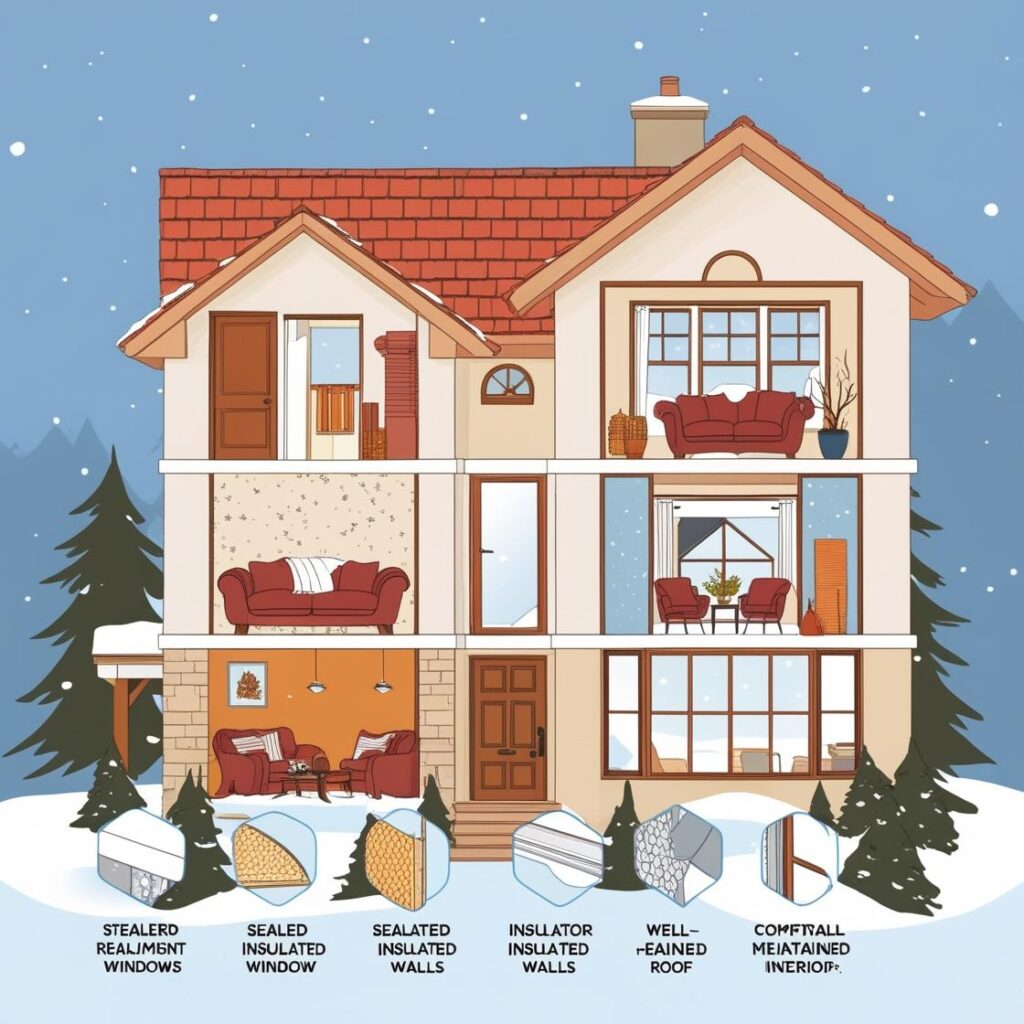- Insulate Water Pipes
- Water pipes that freeze could burst and cause flooding or water damage. You can winterize your pipes by insulating them. However, the cost to insulate pipes will vary depending on whether you complete the work yourself or enlist the help of a professional. To winterize, wrap the insulation around your water pipes, especially for the pipes in unheated spaces such as attics, basements, and garages.
- Add Weatherstripping
- Weather stripping is one of the most common ways to weatherize a home. This process helps stop cold drafts around your doors and windows to keep your home warm and lower your energy bills by as much as 30%
- Add Door Sweeps
- You can put door sweeps on the base of exterior doors to help keep out cold air. A 1/8-inch gap in a door can let in as much air as a window that is open halfway, so it’s important to seal these gaps. Note that if you do have gaps, some experts advise reinstalling the door to prevent drafts.
- Drafts can also come through the chimney and fireplace. So, you’ll want to close the dampers when the fireplace isn’t in use or add glass doors to the fireplace to ensure that cold air won’t come through the chimney.
- Apply Window Film
- Window insulation can improve the efficiency of your windows by up to 90%. Once you’ve added enough weather stripping to seal any gaps, you can also consider adding window film for optimum efficiency.
- Find window insulation kits, or window film, at your local hardware store. Packs with enough film for 5 to 10 windows cost around $10 to $20. The steps to install window film will vary by manufacturer, but generally, you will apply the film to windows using a hairdryer.
- In addition to applying window film, you can also install storm windows. Storm windows make your home more comfortable by reducing drafts and air leakage by 10% or more. Not only that, but storm windows take the hit when there’s snow, hail, or thunderstorms—keeping your windows safe and in better condition.
- Change Your Filters
- Check your air filters on your heating unit before the weather turns cold. A clogged filter restricts airflow, forcing the unit to work harder. The frequency at which you should change your air filter will depend on the type of filter you buy, so be sure to inspect them as needed. If you’re unsure which filter type you need or how to change it, you can always call an HVAC service near youfor assistance. As for any window air conditioners, it’s best to remove window AC units and store them before winter.
- Install a Programmable Thermostat
- With a programmable or smart thermostat, you can save money on energy bills year-round. You can save as much as 10%a year on heating and cooling by simply turning your thermostat back 7–10 degrees Fahrenheit for 8 hours a day. Here are a few ways to adjust your thermostat throughout the day.
- Set the daytime temperature to about 68 degrees Fahrenheit when you are home and lower during the night.
- Set the thermostat to a lower, constant temperature if you’re away for two or more days. Don’t turn it off or set it too low, though, to prevent burst pipes.
- However, if you havean energy-efficient heat-pump system, you may not need to touch the thermostat at all. This is another energy- and money-saving option if you don’t want to mess with a programmable thermostat
- Cover Water Heater Tanks
- Water heater tanks that are located in unheated spaces, like a basement or garage, may require more energy to heat the water once the colder seasons arrive. A water heater tank cover can help ensure your tank doesn’t work as hard to warm your water and decrease heat loss by about 25 percent. A water heater tank cover usually costs around $20, depending on the material, such as fiberglass or foil, the R-value, and whether or not it is resistant to mold and water
- Pair water heater tank blankets with pipe insulation to protect your home from expensive utility bills and even burst pipes or water damage.
- In addition, you can annually flush your hot water heaterto prevent sediment buildup. It will cost between $75–$200 to flush your hot water heater, but you’ll have improved heating and lower energy bills.
- Clean the Gutters
- Autumn’s falling leaves may be pretty, but they can clog gutters and prevent snow and ice from melting and draining properly. Recurring water buildup can lead to water spots or water damage, so it’s best to remove the leaves and debris before the snowy season starts.

